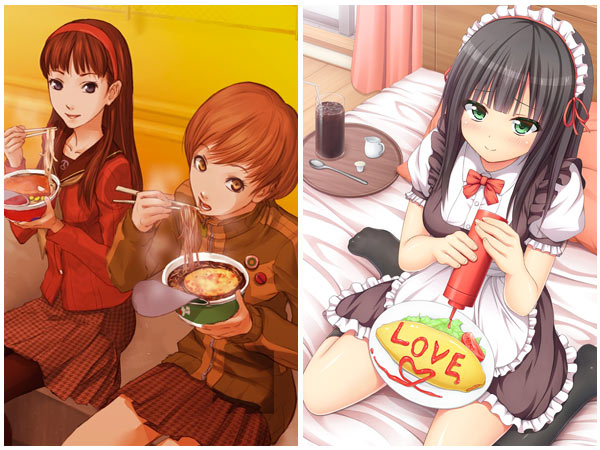
Hello again from J-List. I’m winding down an especially awesome summer here in San Diego in which J-List shook hands with hundreds of our fans at the summer anime conventions, and I got to enjoy being back in the land of Mexican food and cheap pizza for a while. Now it’s time for me to head back to Japan and face the hottest part of Japan’s summer alongside the other J-List members.
One kanji that crops up a lot in Japanese daily life is 洋 yoh, which means “the West” and is usually present opposite 和 wa, which is the kanji for Japan. If you’re currently wearing normal clothes like a shirt, jeans or a suit, you’re wearing 洋服 yoh-fuku, which is what modern Western clothes are called in Japanese. The opposite term, 和服 wafuku, would describe various types of traditional Japanese clothing, from kimono to yukata and jinbei summer kimonos (which make great pajamas). This “Western” label shows up in other places, too, including 洋間 yoh-ma, a “Western room” with sofa and chairs (i.e. any room that isn’t a tatami room), as well as Western toilets, normal toilets you sit down on rather than squat precariously over, hoping you don’t fall in. Food also receives this kanji label, to separate all the newfangled things Japanese started eating after modernization began in the 1870s from older more traditional dishes. Often what the Japanese think of as Western foods can confuse us, though. For example, omurice (an omelet served over rice with a ketchup heart drawn on top) and katsu (Japanese pork cutlet) are classified as European foods, as is curry, which came to Japan via Britain. No matter what kind of food you’re interested in, we have some awesome cookbooks from Japan for you to browse.
There are some interesting cultural tidbits buried inside Japanese food culture. While slurping your food is probably frowned upon in your country, it’s almost required when eating Japanese or Chinese noodles like ramen, soba, or udon, since sucking up the delicious soup along with air is the best way to taste the noodles. There’s no upper ceiling to how loud you’re allowed to slurp, and making these noises is one way of letting whoever prepared the noodles for you know that you think they’re good. When foreigners come to Japan, they usually eat their noodles without making these noises, prompting Japanese to say 静かですね shizuka desu ne (“you eat very quietly, don’t you?”). Although it’s okay to slurp Asian noodles to your heart’s content, don’t try doing this with Italian spaghetti, as this is very bad manners (though some uncouth Japanese do it anyway).
J-List and our sister site JAST USA love bringing out high quality
English-translated “H” games for you, and now we’ve got some good news: Lightning Warrior Raidy III, the awesome third chapter in the popular yuri monster girl fighting RPG series, is in stock and shipping now. If you preordered the game, we’ll be getting your copies out to you very soon,
and if not, you should order it right now! The limited edition we have for you comes with a large Japan-style box, game and high quality color manual, plus 12 collectable cards based on the characters in the game.
















